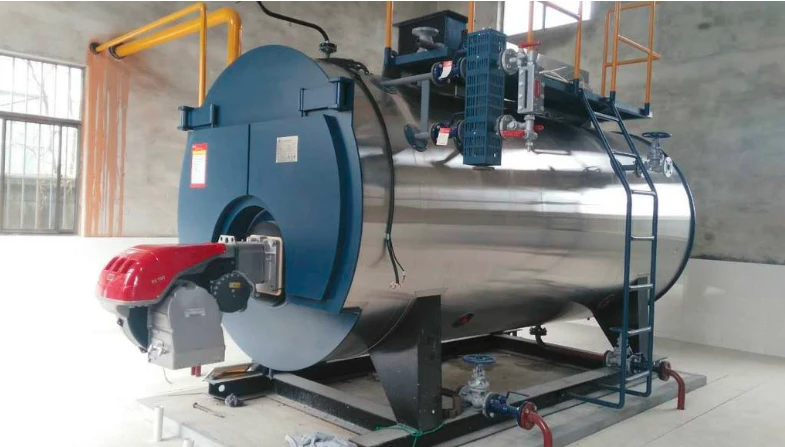
Jan . 17, 2025 04:28 Back to list
Gas (oil) fired steam boiler
Industrial steam boilers form the backbone of many sectors, ranging from manufacturing to energy production. They play a crucial role in processes that demand heat transfer, energy conversion, and thorough sanitation. Understanding the different types of industrial steam boilers is essential for businesses aiming to select efficient solutions for their specific needs. This in-depth guide explores the main types, emphasizing their advantages, limitations, and applications.
Biomass Steam Boilers As sustainability garners global attention, biomass steam boilers are becoming increasingly prevalent. These boilers burn renewable materials such as wood chips, agricultural residues, and other organic waste products to generate steam. Biomass boilers significantly reduce carbon footprint and can even result in cost savings with low-cost fuel sources. They suit industries focused on environmental responsibility, like pulp and paper manufacturing and ethanol production. Challenges include managing fuel supply and storage, as well as the need for flue gas cleaning systems. Waste Heat Recovery Boilers Capitalizing on unused energy, waste heat recovery boilers capture waste heat from other processes or equipment to generate steam. This type of boiler is commonly employed in industries with high-energy waste streams, such as chemical manufacturing and steel production. One of the primary benefits is improved overall efficiency and reduction in fuel consumption and CO2 emissions. The downside is the initial setup costs and technical complexity involved, requiring integration into existing systems. Modular Steam Boilers Modular steam boilers offer flexibility and scalability by grouping multiple smaller boilers that can operate independently or together to meet varying steam demands. They are particularly useful for facilities that experience fluctuating demand or plan for future expansion. These boilers provide redundancy, reduce the risk of downtime, and allow for maintenance without affecting the entire system's operation. Their modular nature can lead to higher upfront costs, but the long-term savings and operational efficiency often justify the investment. Conclusion Selecting the right type of industrial steam boiler depends on factors such as operational demands, fuel availability, environmental considerations, and economic constraints. Understanding the specific needs of your application and matching them with the capabilities of each boiler type is crucial. As industries evolve, so too will the technology and variety available in steam boilers, paving the way for more efficient, sustainable, and versatile thermal energy solutions. Businesses must stay informed and consult with industry experts to make knowledgeable decisions that align with their operational and sustainability goals.


Biomass Steam Boilers As sustainability garners global attention, biomass steam boilers are becoming increasingly prevalent. These boilers burn renewable materials such as wood chips, agricultural residues, and other organic waste products to generate steam. Biomass boilers significantly reduce carbon footprint and can even result in cost savings with low-cost fuel sources. They suit industries focused on environmental responsibility, like pulp and paper manufacturing and ethanol production. Challenges include managing fuel supply and storage, as well as the need for flue gas cleaning systems. Waste Heat Recovery Boilers Capitalizing on unused energy, waste heat recovery boilers capture waste heat from other processes or equipment to generate steam. This type of boiler is commonly employed in industries with high-energy waste streams, such as chemical manufacturing and steel production. One of the primary benefits is improved overall efficiency and reduction in fuel consumption and CO2 emissions. The downside is the initial setup costs and technical complexity involved, requiring integration into existing systems. Modular Steam Boilers Modular steam boilers offer flexibility and scalability by grouping multiple smaller boilers that can operate independently or together to meet varying steam demands. They are particularly useful for facilities that experience fluctuating demand or plan for future expansion. These boilers provide redundancy, reduce the risk of downtime, and allow for maintenance without affecting the entire system's operation. Their modular nature can lead to higher upfront costs, but the long-term savings and operational efficiency often justify the investment. Conclusion Selecting the right type of industrial steam boiler depends on factors such as operational demands, fuel availability, environmental considerations, and economic constraints. Understanding the specific needs of your application and matching them with the capabilities of each boiler type is crucial. As industries evolve, so too will the technology and variety available in steam boilers, paving the way for more efficient, sustainable, and versatile thermal energy solutions. Businesses must stay informed and consult with industry experts to make knowledgeable decisions that align with their operational and sustainability goals.
Share
Latest News
-
High-Efficiency Commercial Oil Fired Steam Boiler for Industry
NewsJul.30,2025
-
High-Efficiency Biomass Fired Thermal Oil Boiler Solutions
NewsJul.30,2025
-
High Efficiency Gas Fired Thermal Oil Boiler for Industrial Heating
NewsJul.29,2025
-
High-Efficiency Gas Fired Hot Water Boiler for Sale – Reliable & Affordable
NewsJul.29,2025
-
High Efficiency Biomass Fired Hot Water Boiler for Industrial and Commercial Use
NewsJul.29,2025
-
High-Efficiency Biomass Fired Hot Water Boiler for Industrial Use
NewsJul.28,2025
Related PRODUCTS
Copyright © 2025 HEBEI HONGZE BOILER MANUFACTURING CO., LTD. All Rights Reserved. Sitemap | Privacy Policy






















